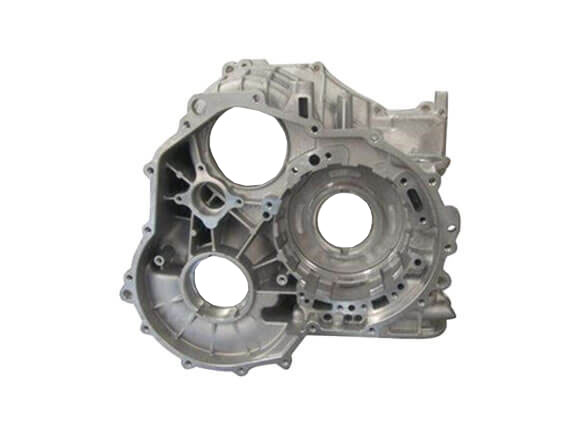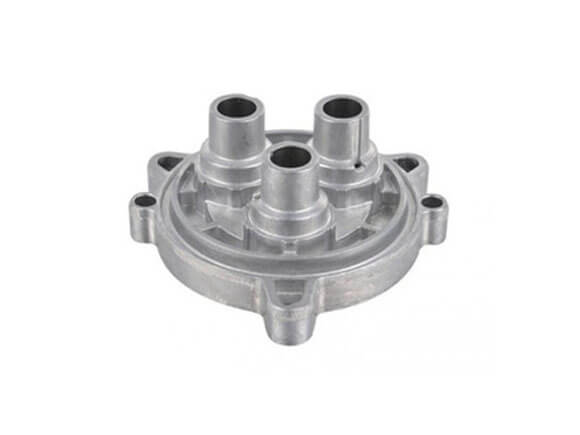The secrets behind efficient aluminum casting and foundry operations
Wiki Article
Understanding the Significance of Light Weight Aluminum Spreading in Modern Manufacturing Processes
Light weight aluminum spreading has become a necessary element in contemporary manufacturing. Its light-weight and long lasting nature adds greatly to different markets, from vehicle to electronics. In addition, innovations in casting methods enhance production efficiency and quality. As manufacturers seek cutting-edge remedies, the duty of light weight aluminum spreading in sustainability ends up being increasingly relevant. This discussion will certainly explore the complex significance of aluminum spreading and its ramifications for the future of manufacturing. What lies ahead in this evolving landscape?The Benefits of Aluminum Casting in Production
Light weight aluminum casting deals numerous benefits that boost its appeal in modern production processes. One significant benefit is its lightweight nature, which leads to decreased energy usage and enhanced fuel effectiveness in transportation applications. Furthermore, aluminum's excellent deterioration resistance prolongs the life-span of actors products, making them more resilient in various atmospheres. The material likewise facilitates complex layouts and complex geometries, allowing producers to create parts that meet specific specifications.Furthermore, light weight aluminum spreading flaunts a fairly low melting factor, which conserves power throughout the production procedure. This characteristic also enables quick cycle times, increasing total productivity. Furthermore, the recyclability of light weight aluminum adds to sustainability efforts, as recycled aluminum requires considerably much less power to procedure contrasted to key light weight aluminum. Collectively, these benefits placement light weight aluminum casting as an essential technique in contemporary manufacturing, accommodating the demands for performance, efficiency, and environmental responsibility.

Applications of Aluminum Spreading Across Industries
While numerous products are used in manufacturing, light weight aluminum spreading has become a pivotal approach across several markets because of its convenience and performance. This process is commonly used in the auto industry for creating lightweight engine blocks, transmission situations, and numerous elements that enhance gas performance. In the aerospace market, aluminum spreading is essential for producing complex parts that need high strength-to-weight ratios, adding to boosted airplane performance.Moreover, the electronic devices market depends on light weight aluminum spreadings for warm sinks and real estates, where thermal administration is important for tool durability. The building and construction industry additionally profits from aluminum spreading in the type of building parts and architectural components that combine visual appeal with longevity. Additionally, the consumer products industry uses light weight aluminum spreadings for kitchenware and showing off devices, leveraging the product's superb rust resistance and visual coating. On the whole, light weight aluminum spreading works as a foundation in modern-day production, supporting varied applications throughout various fields.
The Role of Light Weight Aluminum Spreading in Sustainability
Sustainability has actually ended up being a centerpiece in manufacturing techniques, and light weight aluminum spreading plays an essential function in promoting ecologically friendly remedies. The process of aluminum casting is naturally lasting as a result of the product's recyclability. Light weight aluminum can be recycled several times without shedding its residential or commercial properties, considerably reducing energy usage and basic material requirements. This recycling process consumes just around 5% of the power required for key light weight aluminum production, resulting in a significant decline in carbon emissions.Moreover, light weight aluminum casting assists in the production of lightweight components, which add to energy efficiency in different applications, particularly in the automotive and aerospace markets. Lighter cars take in less fuel, additional decreasing ecological impact. Additionally, advancements in casting methods are enhancing product usage, minimizing waste in manufacturing procedures. As industries look for to line up with sustainability objectives, light weight aluminum spreading emerges as a viable solution, sustaining a round economic climate and cultivating accountable production techniques
Technical Advancements in Aluminum Casting Techniques
As markets develop, the adoption of innovative technologies in aluminum casting techniques has transformed manufacturing procedures. The combination of computer-aided layout (CAD) and computer-aided manufacturing (CAMERA) systems improves accuracy and efficiency, enabling intricate geometries that were previously challenging to generate. Advanced melting and spreading methods, such as die casting and financial investment spreading, have actually improved the high quality of aluminum components, lessening problems and lowering waste. The introduction of automated systems and robotics in casting operations has structured process and enhanced efficiency. These developments also enable real-time surveillance and data analytics, assisting in far better decision-making and quality assurance. Furthermore, the development of new alloys and warm therapy procedures has actually increased the performance capabilities of cast light weight aluminum items. Collectively, these technical advancements not only maximize manufacturing performance however likewise add to the sustainability of aluminum casting in modern-day production.Future Fads in Aluminum Spreading and Its Effect On Technology
Arising fads in light weight aluminum spreading are positioned to reshape the production landscape, driving technology throughout numerous markets. One considerable pattern is the combination of innovative automation and robotics, which improves precision and effectiveness in production processes. Additionally, the surge of additive production strategies is enabling a lot more complicated designs, minimizing product waste and production time. As sustainability becomes a concern, the sector's focus on reusing aluminum and utilizing environmentally friendly methods is anticipated to grow, straightening with global environmental goals.The development of smart spreading technologies, including real-time tracking and data analytics, is set to boost top quality control and operational efficiency. These developments will certainly help with the manufacturing of lighter, stronger, and extra long lasting light weight aluminum components, catering to sectors such as automotive and aerospace. Eventually, these fads will certainly not just maximize making procedures however additionally inspire new applications of light weight aluminum casting, cultivating a culture click here of technology and versatility in the marketplace.
Frequently Asked Questions
What Is the Background of Light Weight Aluminum Casting in Manufacturing?

Exactly How Does Light Weight Aluminum Spreading Contrast to Various Other Steels?
Light weight aluminum casting deals benefits such as lightweight residential properties and rust resistance compared to various other steels. Aluminum Foundry. It improves and promotes complex forms power efficiency, making it a preferred selection in different production applications over larger alternatives like steel or ironWhat Are the Typical Defects in Light Weight Aluminum Casting?
Common problems in light weight aluminum spreading include porosity, contraction, misruns, and incorporations. These concerns can emerge from improper putting strategies, inadequate mold and mildew style, or infected products, causing reduced architectural stability and performance of the end product.Exactly how Is the Top Quality of Light Weight Aluminum Castings Tested?
The top quality of aluminum spreadings is tested via techniques such as visual examinations, dimensional dimensions, non-destructive screening techniques, and mechanical property assessments, making sure that they meet specified standards for efficiency and structural integrity.

What Are the Precaution in Aluminum Spreading Processes?
Safety actions in light weight aluminum casting processes include using personal safety tools, correct air flow systems, normal equipment upkeep, training employees on risks, and executing stringent emergency situation procedures to reduce threats connected with heats and molten metal.The recyclability of light weight aluminum adds to sustainability initiatives, as recycled light weight aluminum needs significantly less energy to process compared to key aluminum. While numerous products are employed in manufacturing, light weight aluminum casting has ended up being a pivotal approach throughout numerous sectors due to its convenience and performance. Advanced melting and spreading approaches, such as die spreading and investment casting, have actually boosted the quality of aluminum parts, decreasing issues and lowering waste. Arising trends in light weight aluminum spreading are poised to reshape the manufacturing landscape, driving innovation across numerous markets. Aluminum spreading has evolved because the late 19th century, originally creating with the intro of aluminum as a light-weight metal.
Report this wiki page